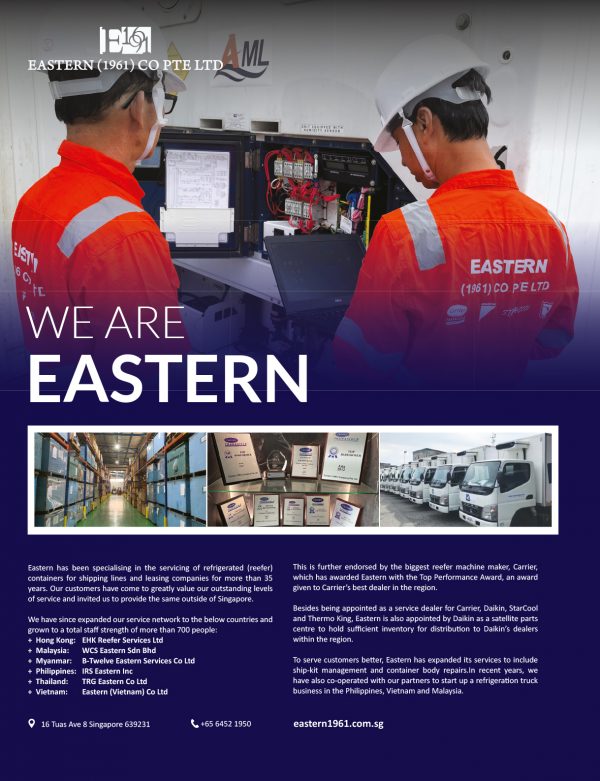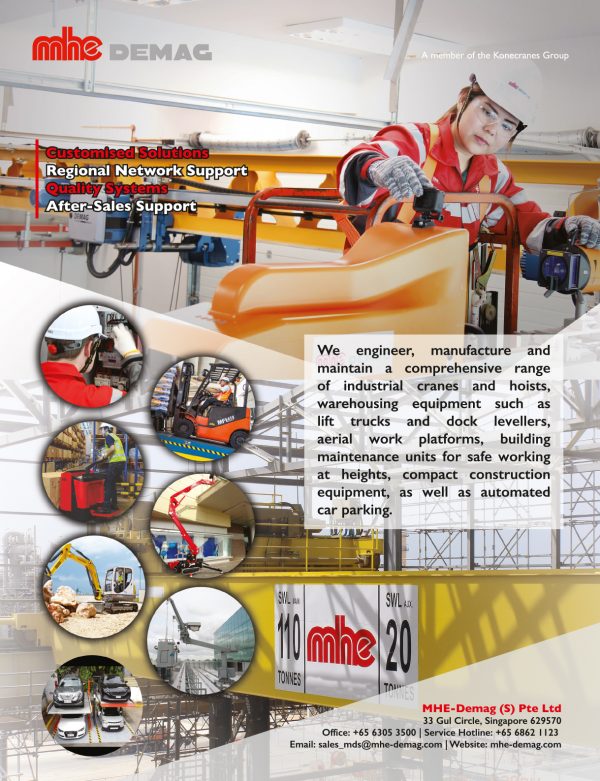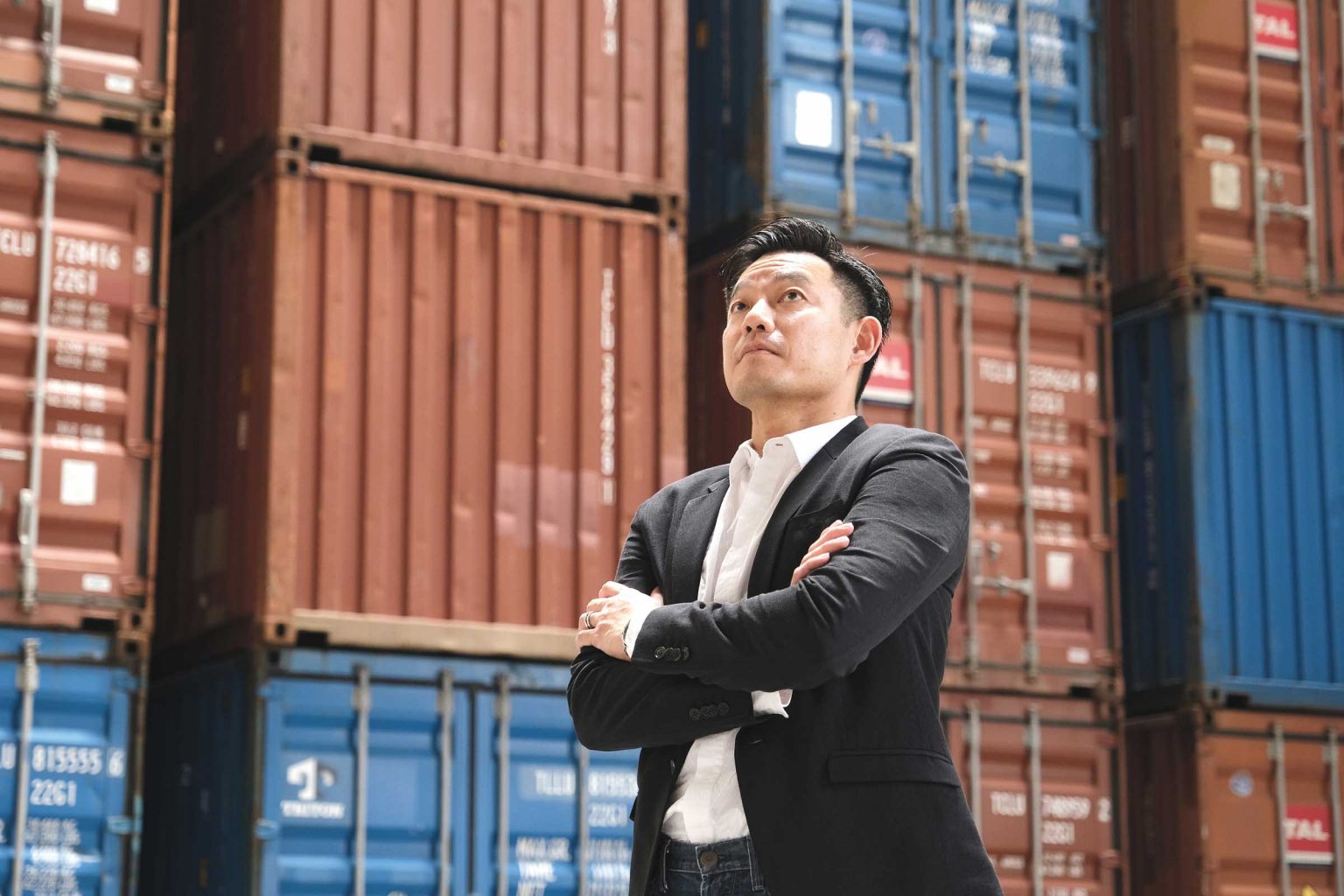If the world has a hub, it’s Singapore. The essential link between East and West, the vital port through which so much global shipping passes, Singapore is a case study in what can be achieved with a combination of ingenuity and energy. It’s a small island with a big will to win.
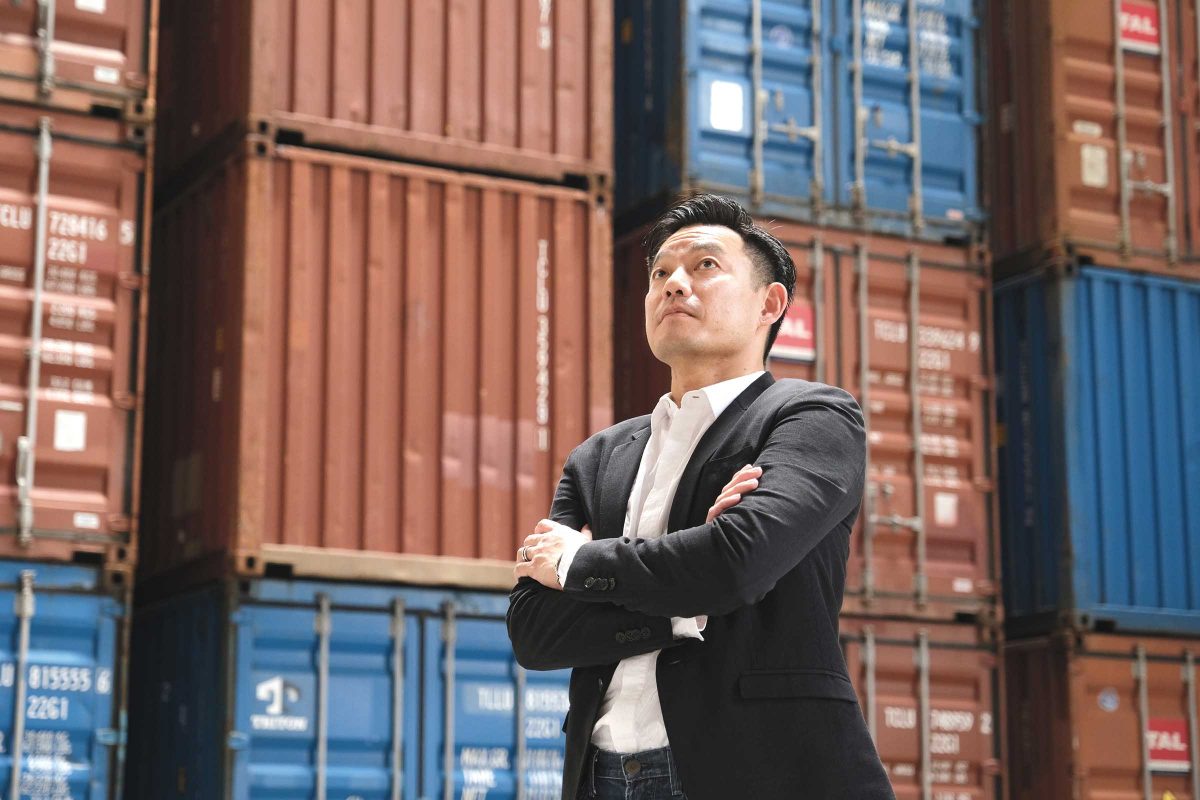
Alongside many other endeavours, its global competitiveness is clearly visible at its shipping terminals, where technology has transformed Singapore’s famed docks from one of beehive manual activity to a beacon of digital innovation.
And nowhere is that more apparent than at CWT. Ricky Loo has worked at the company for more than 26 years, after fulfilling his duties in Singapore’s National Service, and was recently appointed CEO. The company was founded in 1970 as Container Warehousing and Transportation by the Port of Singapore Authority to provide warehousing and container terminal services.
Five decades on, CWT’s global reach in the shipping and transport, logistics, warehousing, commodity marketing, financial and engineering services provides a fully integrated network of solutions to customers around the world.
“This industry is essential, in that it is connected to everyone, especially in Singapore. As an island, everything we need is brought in through the port. Many products pass through Singapore as a trans-shipment hub,” he explains.
Ricky has truly found his niche in CWT Integrated. He has played an integral role in a remarkable transformation of its docks and offices from largely manual tasks to a digitised, automated operation that leads the world.
I say to everyone, you’d better look out for each other, develop a buddy system.
He is also the Deputy President of the Container Depot and Logistics Association, and the current Chair of the Logistics Technical Committee for the Singapore Standards Council, leading the governmentfunded industry project to digitise the whole logistics industry, and spearheading the first fully automated warehouse depot in the region.
The company has a track record of introducing new technology and innovative work practices. Ricky can recall an early project that was implemented just after he joined CWT.
“We actually put together an automated tank cleaning station some 25 years ago with then state-of-the-art technology, using membrane filtration like reverse osmosis and nano filtration together with programmed wash cycles that enabled a systematic quality wash,” he says.
His pioneering role in the industry includes developing a container management system in 2014 that significantly reduces turnaround times from hours to minutes and, most recently, epayment, a container tracking system and partnering in SmartBooking.
“Before this electronic container tracking system, we launched a container management system. It’s a platform where all the depots and trucks can communicate virtually and all the stakeholders in the logistics chain can share information,” he says.
“We also digitalised the depot itself, where all order processing, inspection reports and records are digitised. All the information is uploaded to the cloud in real time – any transactions, movements and so on. Everything is immediately available to the customer via the platform.”
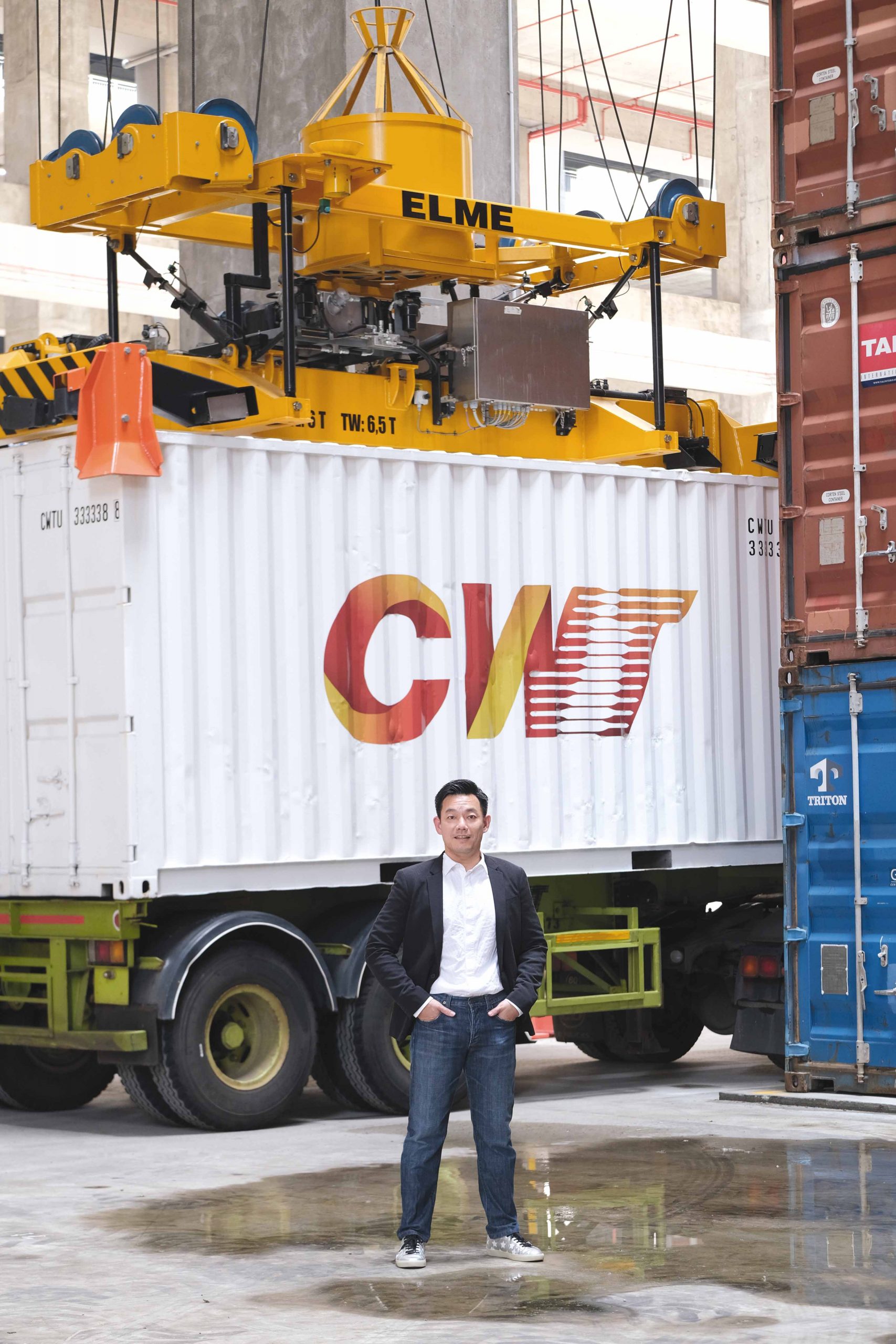
In 2016, Ricky and the team at CDAS designed a comprehensive container trucking system that renders the truck ‘smart’. A tablet or smart device in the truck receives jobs and instructions so the driver doesn’t have to return to the office to receive instructions.
The instructions are filed to the cloud and downloaded by the driver to a smart device, so both operators and customers can track the truck’s location and use Google Maps to check traffic conditions between locations.
The result is a much more streamlined transport system that delivers containers faster and more reliably, and provides comprehensive real-time transportation information using Internet of Things technology to truckers and their customers.
“It helps drivers to also plan their trip. How far is it from one location to the next job? How quickly can he be there? And with this smart device, the trucks are also ‘smart’ – they can communicate with the nodes. For example, en route to a location, a smart device can communicate with the node to advise it is coming, and by enabling several different technologies – geofencing and so on – it can create a virtual queue,” Ricky explains.
“We designed and built the world’s first automated container depot within the building and patented the design. We transformed those traditional tasks that required hands-on roles back into the office environment, and we are in the final stages of a trial of automated inspections using sensors and video analytics, and will hopefully transform those physically demanding and risky jobs back into the office.
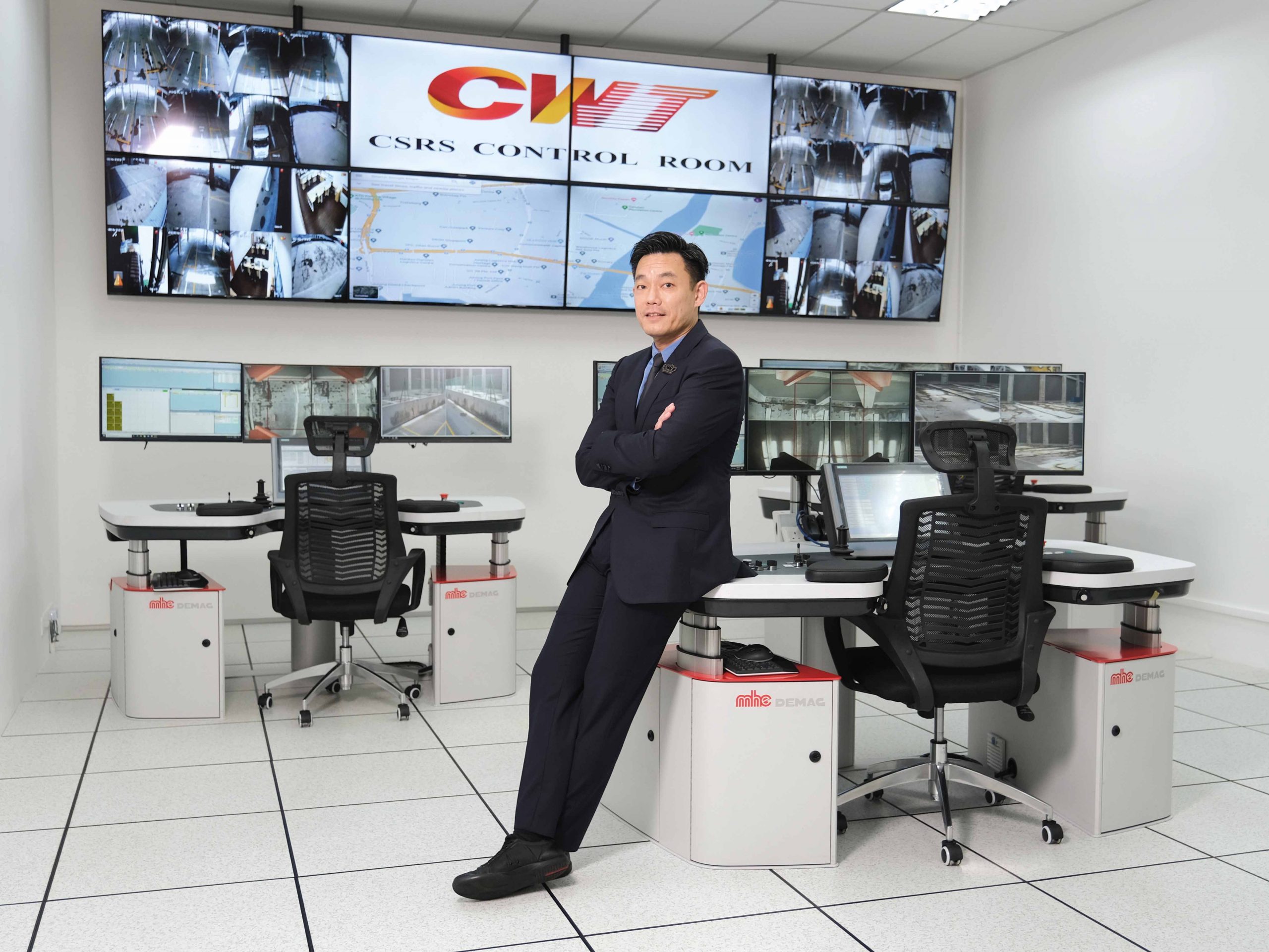
“The final stage will be using robotics for maintenance and repairs, which means that with the whole package, the automated container depot can be controlled remotely.”
According to Ricky, CWT’s customers have far greater expectations in their shipping and logistics requirements than they once did. Global trade has concertinaed deadlines for delivery anywhere in the world, and cargo volumes have increased exponentially.
“In the past, everything required heavy physical activity, but now with one click and a quick search, you can get any information, which means that customers’ requirements are doable,” he says.
“Therefore, we should be integrating this data and sharing certain non-sensitive information for more thorough planning so the different stakeholders can utilise it and improve their own operation.”
Hard labour
While digitised logistics systems have revolutionised the industry, they’ve also forever changed the labour requirements of CWT and its employees. Ricky points out that it has removed a lot of repetitive manual labour chores but has not really reduced the employee count and, importantly, not alienated the workforce who are redeployed.
Instead, employees move on to other tasks with training to equip them with the necessary skills. Ricky has a readily understood explanation for what has, and is, happening at CWT.
“A person can sweep a floor, but a simpler process is holding a vacuum cleaner to clean the floor. People acknowledge that vacuuming is better and more efficient than sweeping, and then you introduce the next thing – a robotic vacuum cleaner. Now that person doesn’t hold the vacuum cleaner; the vacuum cleaner moves itself and does the job. But that person is still there to manage it. So the story I like to tell is that digitalisation and the automation of processes is an ongoing campaign.”
To ensure that CWT’s employees are on board with the changes in operations, Ricky believes that providing a measured approach to their impact is vitally important. It’s imperative that all staff accept and appreciate the changes to their workplace, and benefit from them.
I never shut off information or feedback. This is how we improve.
“I always say, one step at a time. You give people information they can understand so they will move along with you,” he says.
“Instead of employing a different pool of people, I train the current people to adopt technology in a bite-size manner instead of in a full-blown package. They understand that by accepting a step-by-step development method, they are still employed.
My management style is that I tell them that they still have a job and are being elevated and trained to do something different – a little more technical – so they grow at the same time the company grows.
“I empower them, enrich them and make sure they learn and come along with me instead of leaving them behind, which I believe is wrong. If they know that management is there to train them, most of them will come along with us. So my method is collaborative human management of smart data and quick calculations to make sure the whole thing works together. My old staff are still with me, but they are now very technology driven.”
Pandemic pressure
The arrival of the COVID-19 pandemic stressed on CWT that staff safety is all important. It was impossible for the company to cease operations during the pandemic, so safety measures were immediately instigated and alternative procedures were put in place. It provided confirmation that its long-term digital technology strategy was the right choice.
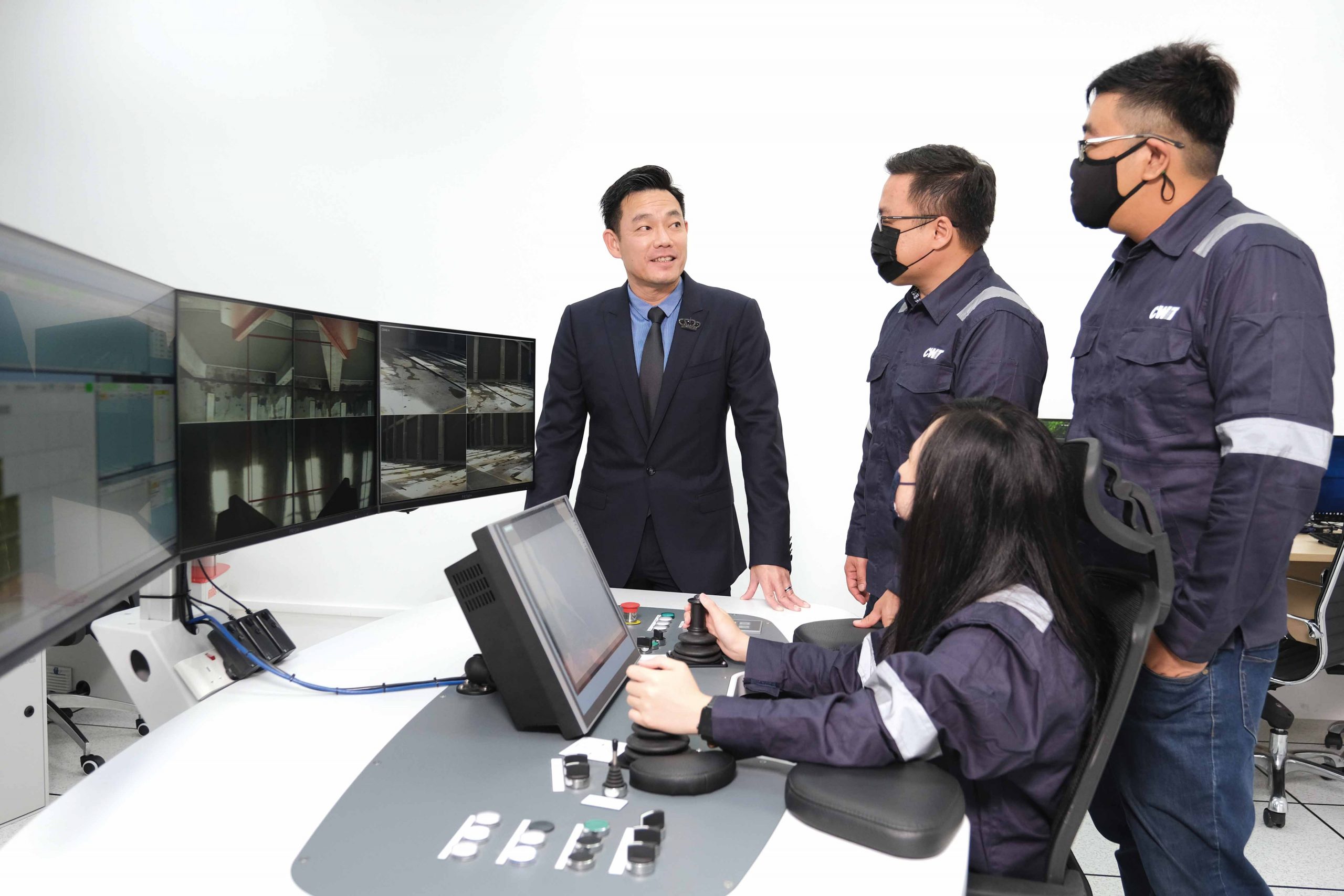
“We have a very strong safety culture here because I’m involved in the workplace safety health council as well. So all the safety standards are in place, and we are on top of everything,” Ricky says.
“We redesigned certain work practices to minimise the hazards. PPE is in abundance and we make sure everyone is protected. I think that’s very important.
“I always tell my employees that a machine can be damaged and we can buy a spare part, but when you injure yourself, there’s no way we can buy a hand for you. I say to everyone, you’d better look out for each other, develop a buddy system.
In my safety talks, I always ask them to look at their phones and bring up a photo of their family. I tell them to just do it for their family. It’s an important message.
“When they have a sense of safety and they need to make sure they go home safely, a lot of them participate and also help to raise standards. I think that’s very critical.”
That approach to staff underlines a philosophy of taking on board the knowledge and experience of employees, using it to expand and refine the company’s operations.
“We are very open and staff-oriented. I always believe staff feedback is very important because sometimes you can’t look at all angles and all areas. So I never shut off information or feedback. This is how we improve,” Ricky reveals.
“Our employees have been here for a while and have their own experiences. They probably know something that some of us may not understand. “So this is how we work together – from their experiences of how work gets done, plus the knowledge of technology and available systems. We collaborate and work with our staff so they can make the process better and become more productive.
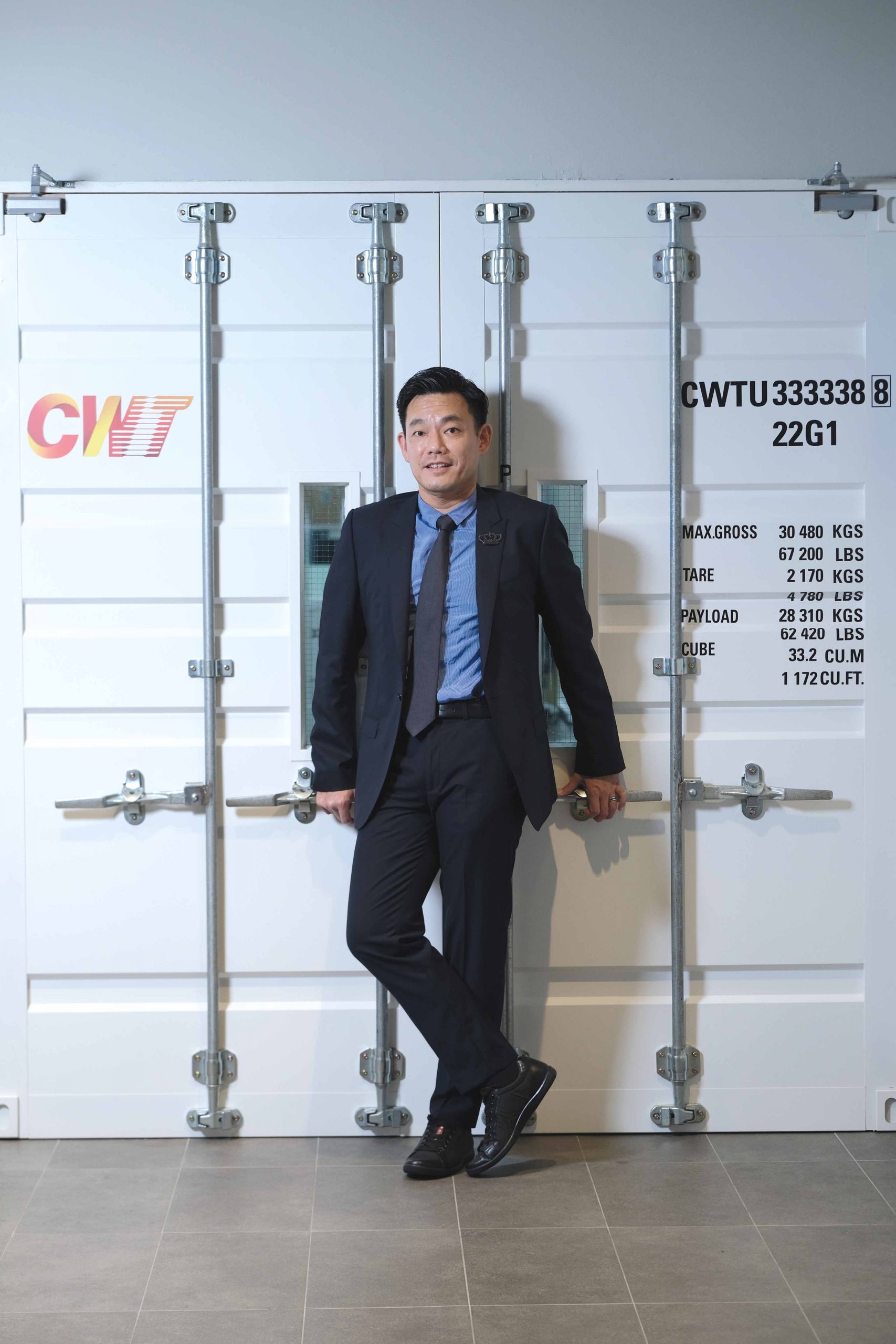
“The great thing about this company is it empowers me to think about how to improve our processes, and when I can convince management that I can, they usually let me do it. I am a dreamer who also makes dreams come true. I approach work logically, and my interest in technology, coupled with creativity, allows me to think and do stuff out of the box. I lead by example.”
This philosophy is a lesson Ricky learned before he began his career at CWT. Some of his formative years were spent in National Service for Singapore’s military, where he excelled. In his officer cadet course, he was presented with a sword award for excellence in physical, mental and academic performance. During this period he came to understand how the right leadership attributes can contribute to a cohesive team effort.
“I was fortunate to be part of the Officer Corps during my National Service in the military,” he recalls. “I learned a lot from the military – how to lead by example, and how to care for your soldiers. A lot of what I learned translates well from a military standpoint to how to take care of people, bring them along and convince them, and how to lead them to do things.
“The best advice I ever received was from my trainer on our officer cadet course. He said before you ask somebody to do something, make sure you have done it, and that you did it well. You should be the person to show it can be done and that you yourself can do it. Then others will believe you.”
Proudly supported by:

